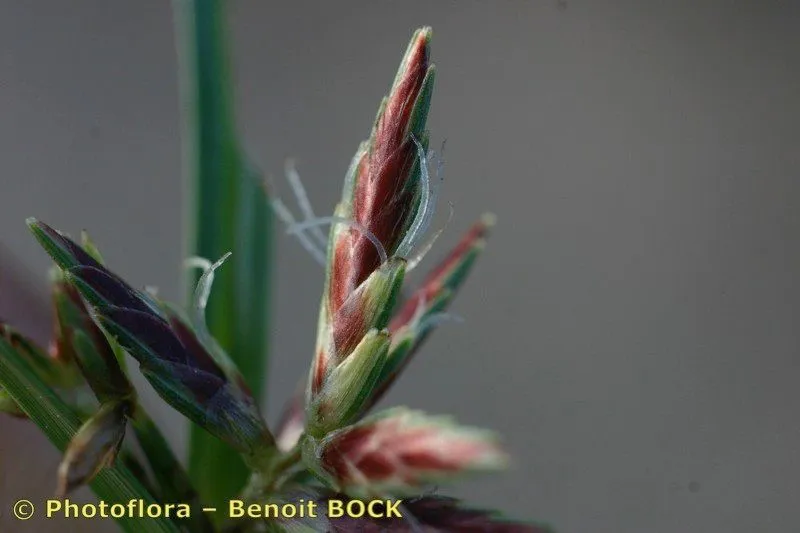
Author: Rottb.
Bibliography: Descr. Icon. Rar. Pl.: 31 (1773)
Year: 1773
Status: accepted
Rank: species
Genus: Cyperus
Vegetable: False
Observations: Temp. Eurasia to Indo-China
The Tidal Marsh Flat Sedge, scientifically named Cyperus serotinus, is a notable member of the Cyperaceae family. First described and illustrated in the work “Descr. Icon. Rar. Pl.” in 1773 by the botanist Rottb., this plant has captivated the attention of botanists and plant enthusiasts alike due to its distinctive characteristics and adaptability.
Distribution and Habitat
Cyperus serotinus thrives predominantly across temperate regions of Eurasia extending to Indo-China. This extensive geographical range showcases the plant’s versatility in adapting to varying climatic and soil conditions. Typically found in tidal marshes, the Tidal Marsh Flat Sedge demonstrates a remarkable ability to grow in waterlogged and saline environments, making it an essential species for studying ecosystem dynamics in such habitats.
Key Characteristics
This sedge is easily identifiable by its grass-like appearance, with slender, erect stems that often grow in dense clusters. The leaves are long, narrow, and tend to have a somewhat glossy surface. The inflorescences are characterized by their flattened, umbrella-like clusters, a distinctive feature that provides the plant with its common name. These flower clusters, or spikelets, are usually arranged in a compact, bract-covered manner, an evolutionary trait that likely supports its survival in marshy environments.
Ecological Importance
Cyperus serotinus plays a critical role in its native ecosystems. As a marsh plant, it contributes significantly to the stabilization of soil and prevention of erosion, particularly in tidal zones where water movement is a constant. Moreover, it offers habitat and food for various aquatic and semi-aquatic organisms, thereby supporting biodiversity. The dense growth of this sedge also assists in filtering pollutants from water, enhancing the overall health of wetland areas.
Uses and Cultural Significance
Beyond its ecological value, the Tidal Marsh Flat Sedge has been utilized in traditional practices across its native regions. While specific cultural uses can vary, plants in the Cyperaceae family are generally known for their applications in thatching, weaving, and even in medicinal contexts in some cultures.
Conservation Status
While Cyperus serotinus is not currently listed as endangered, its habitat is susceptible to human activities such as industrial development, pollution, and climate change. Protecting tidal marshes and implementing sustainable environmental practices are crucial to ensure the survival of this species and the overall health of the ecosystems it supports.
Cyperus serotinus, the Tidal Marsh Flat Sedge, is more than just a plant of marshes; it is a vital component of its ecosystem and a subject of interest for botanists and ecologists. Understanding and preserving this species is fundamental to maintaining the ecological balance and health of the wetland habitats where it flourishes.
Eng: tidalmarsh flatsedge, flat sedge, tidal marsh flat sedge
Deu: spätes zypergras
En: Tidal marsh flat sedge, Flat sedge, Tidalmarsh flatsedge, Tidal-Marsh Flat Sedge
Ca: Serrana de fulla ampla
Fr: Souchet de Monti, Souchet tardif, Petit-jonc tardif
De: Spätes Zypergras, Blutrote Fingerhirse, Weiden-Alant
It: Zigolo tardivo
Taken Oct 15, 2005 by Photoflora – Benoit BOCK (©)
Taken Oct 15, 2005 by Photoflora – Benoit BOCK (©)
Taken Oct 15, 2005 by Photoflora – Benoit BOCK (©)
Taken Oct 15, 2005 by Photoflora – Benoit BOCK (©)
Taken Jan 1, 1970 by Photoflora – L’Abbé COSTE (©)
Growth habit>: Graminoid
Ph maximum: 7.0
Ph minimum: 6.5
Light: 8
Atmospheric humidity: 8
Bloom months: [‘jul’, ‘aug’, ‘sep’]
Soil nutriments: 5
Family: Myrtaceae Author: (F.Muell.) K.D.Hill & L.A.S.Johnson Bibliography: Telopea 6: 402 (1995) Year: 1995 Status:…
Family: Rubiaceae Author: Pierre ex A.Froehner Bibliography: Notizbl. Bot. Gart. Berlin-Dahlem 1: 237 (1897) Year:…
Family: Sapindaceae Author: Koidz. Bibliography: J. Coll. Sci. Imp. Univ. Tokyo 32(1): 38 (1911) Year:…
Family: Asteraceae Author: A.Gray Bibliography: Pacif. Railr. Rep.: 107 (1857) Year: 1857 Status: accepted Rank:…
Family: Fabaceae Author: Medik. Bibliography: Vorles. Churpfälz. Phys.-Ökon. Ges. 2: 398 (1787) Year: 1787 Status:…
Family: Aspleniaceae Author: (Cav.) Alston Bibliography: Bull. Misc. Inform. Kew 1932: 309 (1932) Year: 1932…